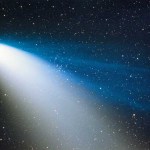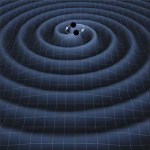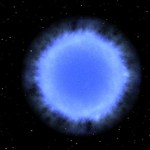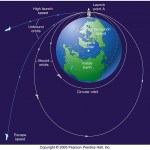neutron star
"This nebula had such a resemblance to a comet in its form and brightness that I endeavored to find others, so that astronomers would not confuse these same nebulae with comets just beginning to shine." -Charles Messier
Let's take a journey back in time to when our known Universe was a lot smaller. The only planets discovered were Mercury through Saturn: the naked eye planets. The well-known objects were our Moon, the (naked-eye) planets and their moons, and the stars and the Sun. After those, the only new objects that were routinely hunted in the night sky were those two-tailed recurring…
"There is a single light of science, and to brighten it anywhere is to brighten it everywhere." -Isaac Asimov
One of the most spectacular and successful ideas of the 20th Century was Einstein's General Relativity, or the idea that matter and energy determines the curvature of spacetime, and the curvature of spacetime in turn determines how gravitation works.
Image credit: Hyper-Mathematics - Uzayzaman / Spacetime.
From the orbits of planets to the bending of starlight, General Relativity governs all gravitational phenomena in the Universe, and accurately describes every observation we've…
There is a beautiful pulsar paper coming out in Nature tomorrow, 28th of October issue (Demorest et al 467, 1081, 2010)
Green Bank Telescope measurements of PSR J1614-2230 show it to be a 3ms binary pulsar with a white dwarf companion in an orbit aligned near perfectly edge on to our line of sight.
Measurements of the Shapiro Delay provide a measurement of the mass of the white dwarf, allowing the mass of the neutron star to be calculated from the known orbit of the white dwarf.
The resultant inferred mass is 1.97 +/- 0.04 solar masses.
click to embiggen
This is a very nice result.
There…
We know, more or less how supernovae work. We've seen them just hours after they first go off through telescopes and satellites. The Crab Nebula, also known as M1, was a supernova that went off nearly 1,000 years ago in our own galaxy, for example, and we can simulate pretty well that it formed like this:
But this is totally new: a paper is coming out in the journal Nature tomorrow (the 22nd of May), where they've caught a star exploding red-handed!
First things first; here's a quicktime movie of the explosion. Let's put up some screenshots of the Blue Giant star before the explosion:
Here'…
You and I have lived on planet Earth long enough to know that if you want to launch something into space, it needs to travel fast enough to escape the pull of Earth's gravity. Launch it with too slow of a speed, and it crashes back into Earth. Launch it with a little more speed, and you can send it into orbit (like a satellite). But launch it fast enough, and it can escape from Earth's gravity altogether. The speed to completely escape from Earth's gravity is pretty fast: about 11.2 km/s, or 7 miles per second!
Make something denser and more massive, and you'll have to go faster and faster…



